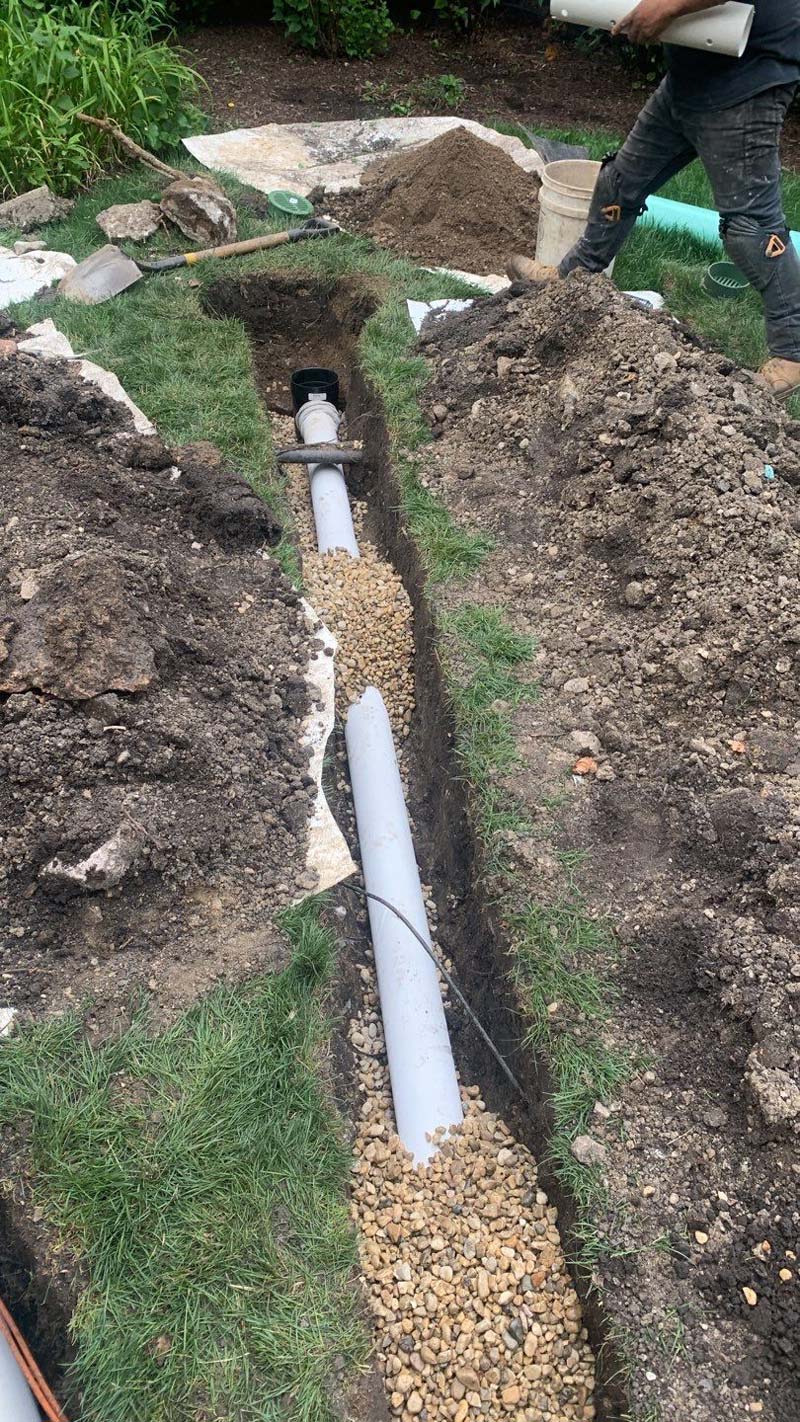
French drains offer an easy solution to drainage issues around your house. Simply dig a trench and fill it with gravel, which should take no more than an afternoon if handled by professionals.
French drains work by redirecting groundwater towards an appropriate drainage location such as a municipal waste drain or rain barrel, helping prevent erosion control as it goes.
French drains utilize perforated pipes that collect and direct the collected water in accordance with a property owner's desired direction. It could drain into an underground system, street gutter, rain garden or some other part of their landscape.
An optimal pipe size and layout is critical to the efficient functioning of any system. Calculating drainage capacity involves multiplying rainfall intensity with catchment area size.
A trench should be lined with quality drainage fabric in order to reduce soil migration and blockages in perforated pipes, and maintain gravel's permeability. When selecting drain fill material, round natural rocks such as river gravel should be used - compacted crushed stone contains fines that clog drain inlets, potentially increasing future maintenance costs significantly. This will significantly decrease future upkeep requirements.
French drains are subsurface drainage systems designed to help prevent water damage around your house. When installed correctly, these drainage systems consist of a slightly sloped trench filled with gravel and perforated pipe that directs any excess water away from its path and into a safe location away from your home.
Before commencing any excavation work, it is crucial to contact your utility company and have any underground lines marked. Furthermore, hiring an expert for installation is recommended.
Trench drains are surface drainage systems made up of long channels connected by grate covers that vary in load bearing capacity for foot traffic, to ADA compliance and heavy traffic loads. Fabricated either on site or preformed in a factory setting, trench drains come in various materials like HDPE plastic, polymer concrete and cast iron to suit every environment.
French drains use scientific principles to quickly and effectively dispose of excess water on properties. They do this by taking any that collects on surfaces and channeling it elsewhere for collection.
Grate systems covering drains should be made of long-wearing materials that can withstand heavy traffic and wear, are compliant with ADA guidelines, and come equipped with features to prevent accidental trips for pedestrians and vehicles alike.
French drain grates come in various sizes and styles that complement the rest of your landscape perfectly. When selecting any grate that will be used for traffic purposes, its load class rating must be taken into consideration to avoid breakage or injury to pedestrians.
Installing the correct drainage system is key to protecting against costly repairs and water damage to your property. One key feature of a French drain is filter fabric lining its trench before adding perforated pipes and gravel for drainage.
Geotextile landscape fabric provides water with an easy path through while keeping out dirt, debris and sediment that could block pipes. Made of polypropylene material, this non-woven geotextile allows water to pass while protecting pipes from blockage caused by dirt or debris accumulation. Plus it's resistant to rot, chemicals, UV rays and heat!
Fabric drainage systems come in various weights to meet different requirements; heavier fabric will provide better resistance against tears and punctures, so regular inspections and cleaning should help your fabric last for as long as possible. Once in place, regular maintenance including inspections and cleaning should help it last even longer.
French drains provide an effective gravity-assisted method of keeping excess water away from home and business foundations, diverting run-off to areas with sandy soil instead.
Gravel is an essential element of a French drain as it keeps soil out of the pipe and ensures that water flows smoothly while filtering out debris and sediment, keeping your drain working as intended.
To install a french drain, begin by assessing problem areas and outlining its trench's route with stakes and string. Make sure the slope of the trench points towards its desired drainage outlet without interfering with public or private property, before digging it and filling it with gravel that prevents collapsed drains from collapsing and clogging up over time.
Thank you for reading our article on French drains and how they can benefit your home's drainage system. Now, let's shift our focus onto another important aspect of your home's structure - roof framing. Are you interested in learning everything you need to know about roof framing? Check out our Ultimate Guide to Roof Framing for a comprehensive understanding of this crucial architectural element. From the basics to advanced techniques, we've got you covered!
Immerse yourself in architecture’s most boundary-pushing ideas—where innovative home improvements meet visionary urban developments. Discover new building techniques, materials, and creative concepts that are redefining how we shape our spaces on a global scale.